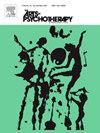How to use theories to explain effects of the creative arts therapies: The case of Polyvagal Theory
IF 1.5
3区 心理学
Q3 PSYCHOLOGY, CLINICAL
引用次数: 0
Abstract
Research on the effectiveness of Creative Arts Therapies (CATs) has significantly expanded over the past decade, yet a deeper understanding of the underlying mechanisms contributing to positive therapeutic outcomes remains necessary. Integrating concepts from psychology, social sciences, and neuroscience can enhance this understanding, but applying scientific theories requires assessing their robustness, validity, and relevance. This article explores how to evaluate the quality of existing theories, using Polyvagal Theory (PT) as a case study. PT has been increasingly applied in CATs research and practice to explain intervention effects on stress- and trauma-related outcomes. In addition to discussing PT’s general quality, its relevance to the field of CATs is considered, along with critical implications for practice, research, and education. The intention is to initiate an open dialogue on the appropriate use of scientific theories, such as PT, in explaining CATs’ therapeutic mechanisms. Although effort has been made to provide a well-supported discussion, opinion-based analyses inevitably involve some subjectivity. Expanding the theoretical scope beyond PT to other widely used or relevant models may further contribute to understanding the mechanisms of CATs and should be complemented by recognizing the importance of the arts in developing a rationale for CATs that is grounded in both theory and practice.
如何用理论解释创造性艺术疗法的效果:以多迷走神经理论为例
在过去的十年中,对创造性艺术疗法(CATs)有效性的研究已经显著扩展,但对促进积极治疗结果的潜在机制的深入理解仍然是必要的。整合心理学、社会科学和神经科学的概念可以增强这种理解,但应用科学理论需要评估它们的稳健性、有效性和相关性。本文以多迷走神经理论(Polyvagal Theory, PT)为例,探讨如何评价现有理论的质量。PT越来越多地应用于CATs的研究和实践中,以解释干预对压力和创伤相关结果的影响。除了讨论PT的一般质量外,还考虑了其与cat领域的相关性,以及对实践,研究和教育的关键影响。其目的是发起一场关于适当使用科学理论(如PT)来解释cat的治疗机制的公开对话。虽然已经努力提供一个有充分支持的讨论,但基于意见的分析不可避免地涉及一些主观性。将理论范围从PT扩展到其他广泛使用的或相关的模型,可能进一步有助于理解cat的机制,并应认识到艺术在建立基于理论和实践的cat基本原理方面的重要性。
本文章由计算机程序翻译,如有差异,请以英文原文为准。
求助全文
约1分钟内获得全文
求助全文
来源期刊

Arts in Psychotherapy
Multiple-
CiteScore
3.20
自引率
11.10%
发文量
66
期刊介绍:
The Arts in Psychotherapy is a dynamic, contemporary journal publishing evidence-based research, expert opinion, theoretical positions, and case material on a wide range of topics intersecting the fields of mental health and creative arts therapies. It is an international peer-reviewed journal publishing 5 issues annually. Papers are welcomed from researchers and practitioners in the fields of art, dance/movement, drama, music, and poetry psychotherapy, as well as expressive and creative arts therapy, neuroscience, psychiatry, education, allied health, and psychology that aim to engage high level theoretical concepts with the rigor of professional practice. The journal welcomes contributions that present new and emergent knowledge about the role of the arts in healthcare, and engage a critical discourse relevant to an international readership that can inform the development of new services and the refinement of existing policies and practices. There is no restriction on research methods and review papers are welcome. From time to time the journal publishes special issues on topics warranting a distinctive focus relevant to the stated goals and scope of the publication.
 求助内容:
求助内容: 应助结果提醒方式:
应助结果提醒方式:


